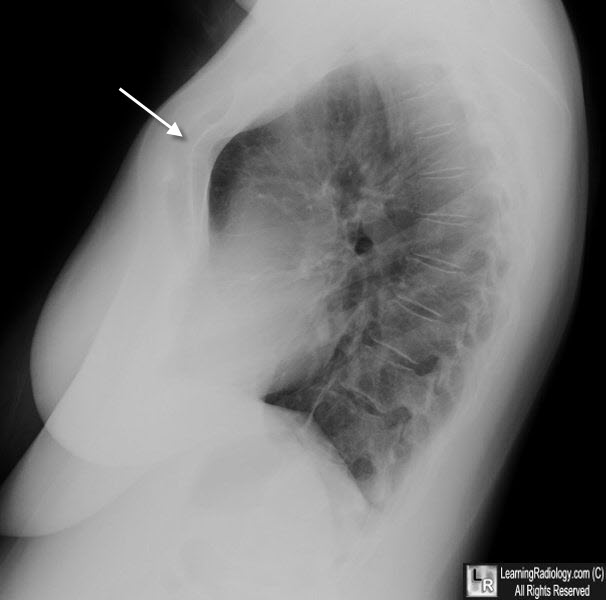|
|
Pectus Carinatum Deformity
General Considerations
- Uncommon deformity of the sternum displaying anterior protrusion usually presenting in childhood and worsening during adolescence
- Less common than pectus excavatum
- Familial occurrence
- AKA chicken breast, pigeon breast, keel deformity
Clinical Findings
- Usually asymptomatic
- Rarely, dyspnea and intolerance to exercise
- Chest pain on lying prone
- May be associated with
Imaging Findings
- On lateral radiographs of the chest the protrusion can involve the middle and lower sternum (chondrogladiolar) or the manubrium and upper sternum (chondromanubrial)
- The more common chondrogladiolar deformity is asymmetric in 30-50% of cases
- The chondromanubrial variety represents only 5% of pectus carinatum cases
- The upper part of the sternum protrudes anteriorly and the lower part posteriorly; the lowest part may be directed anteriorly again, giving it a Z shape on the lateral view
Differential Diagnosis
- Barrel chest deformities with increased anteroposterior (AP) chest diameters can be seen in chronic obstructive pulmonary disease
Treatment
- Sternal bracing until adulthood
- Surgical repair
Prognosis
- Up to 80% correction with bracing and 97.4% with surgical repair

Pectus Carinatum Deformity. On the lateral projection, there is anterior bulging of the sternum at the chondromanubrial junction (white arrow). The lower sternum is depressed inward, compressing the heart between it and the spine.
Imaging of chest wall disorders MY Jeung, A Gangi, B Gasser. Radiographics. 19 (3): 617-37.
|
|
|